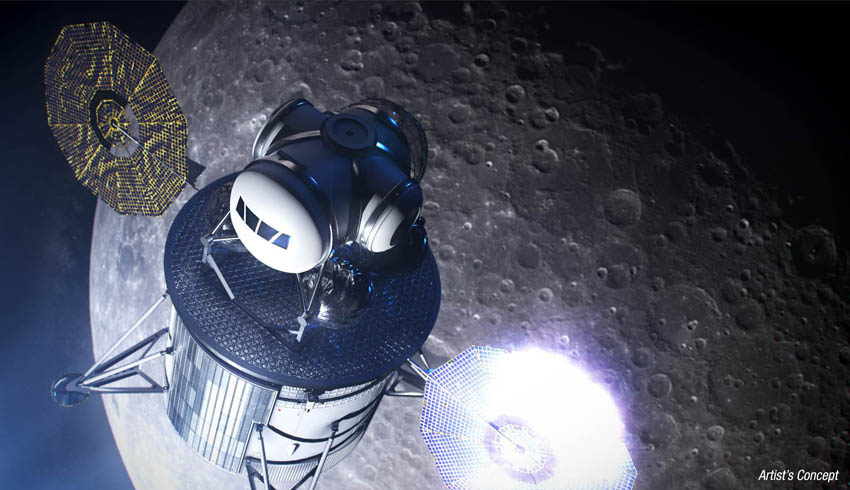Dr Thomas said the 2024 goal was driven by politics not engineering.
“And that's a very dangerous thing to do because you can't change engineering to suit politics. You can change politics to suit engineering,” he told reporters in Adelaide.
"We run the risk of killing further astronauts if we have unrealistic schedule pressure.
"The very big risk that I see NASA is facing is that it is under incredible pressure from the administration, the White House, to bring the human return to the moon way earlier than perhaps the engineering should demand."
NASA originally planned to return to the moon in 2028.
Its plans have been substantially accelerated by the current US administration, with Vice President Mike Pence declaring in March that it was the stated policy of the administration and the US to return astronauts to the moon within the next five years – that’s 2024.
Man hasn’t set foot on the moon since the last of the US Apollo missions in December 1972. No other nation has landed anyone on the moon but China has announced its own ambitions for a moon landing around 2030.
However, to achieve a moon landing again, NASA has plenty of work ahead.
There’s no moon lander yet, though there is a spacecraft, the Orion, which will undergo an uncrewed flight next year and the first crewed mission soon after.
The Space Launch System (SLS), successor to the Saturn V rockets that launched the Apollo astronauts, is mostly developed.
NASA calls the new moon program Artemis, after the twin sister of Apollo.
Considering the technical challenges and the risks involved in the moon program, NASA escaped astonishingly lightly.
Three astronauts died in a capsule fire during a ground test in January 1967. Another seven died in January 1986 when the space shuttle Challenger exploded shortly after launch, while seven more died in February 2003 when the shuttle Columbia disintegrated on re-entry. The US lost another six astronaut trainees, mostly to crashes while flying jet aircraft.
Russia has lost four cosmonauts during actual missions and another two during ground during training accidents. There’s speculation and assorted conspiracy theories that Soviet cosmonaut losses were actually greater.
Dr Thomas, who flew on five space shuttle flights missions and lived on the Russian Mir space station for five months, said the US space tragedies all occurred when NASA was under schedule pressure, as it is now with its accelerated moon program.
"I think the White House is to blame. I would put it [with] the administration. I don't know how interested Trump actually is in space but he's clearly in charge," Dr Thomas said.

